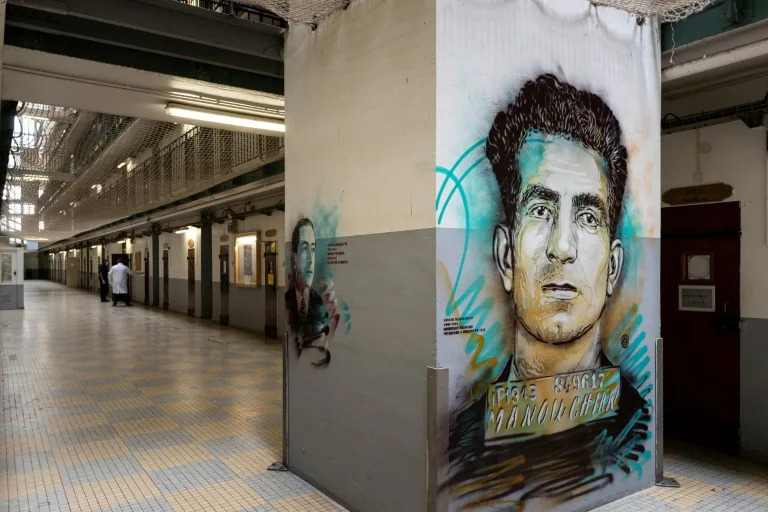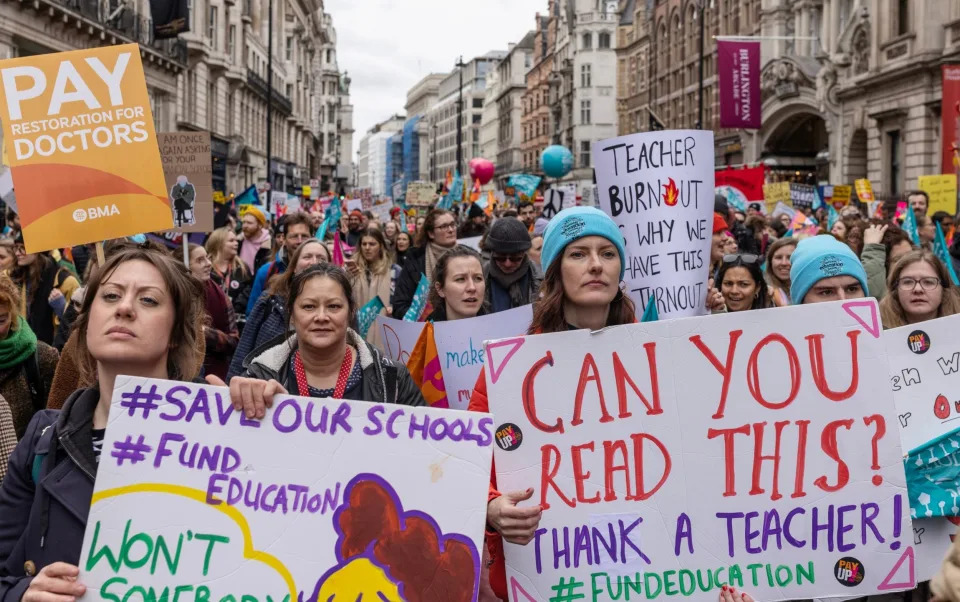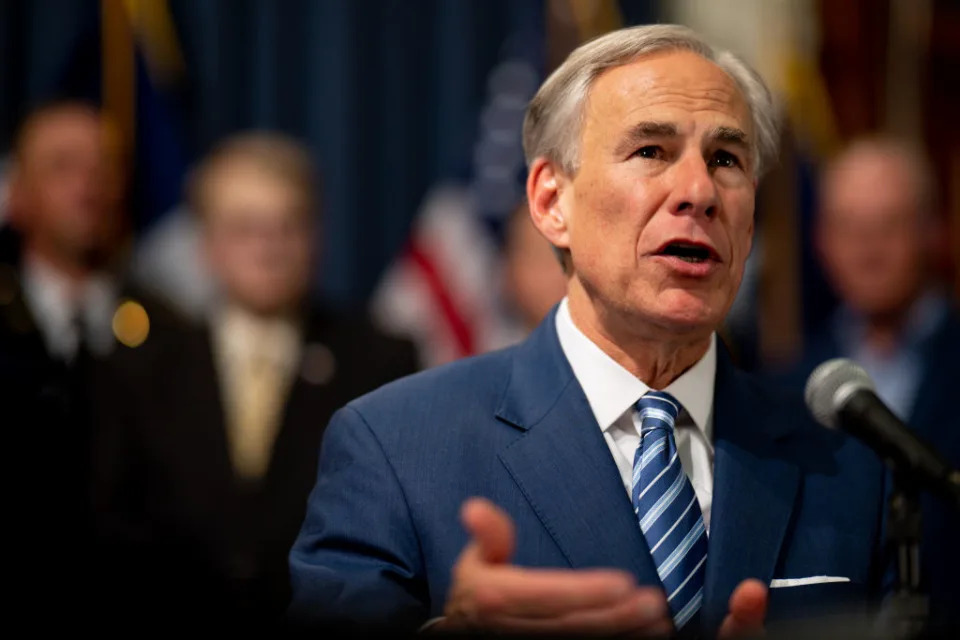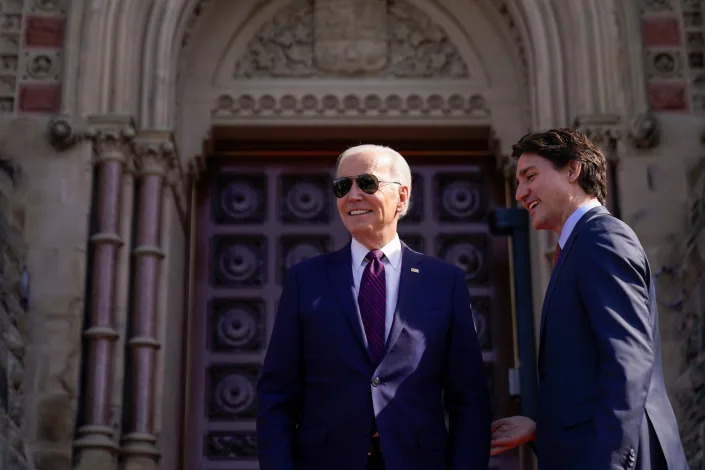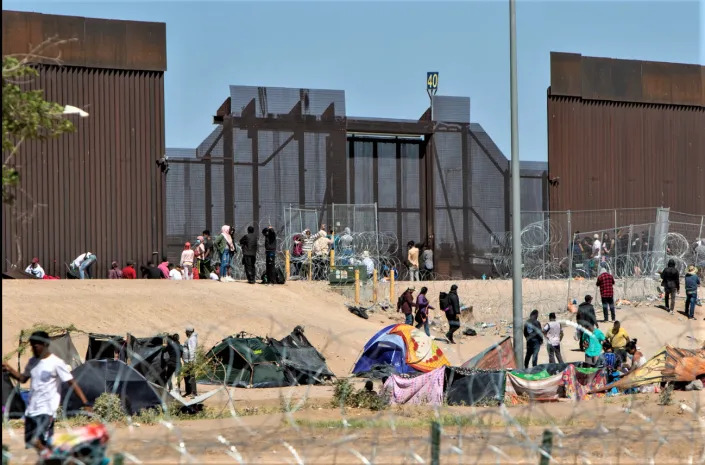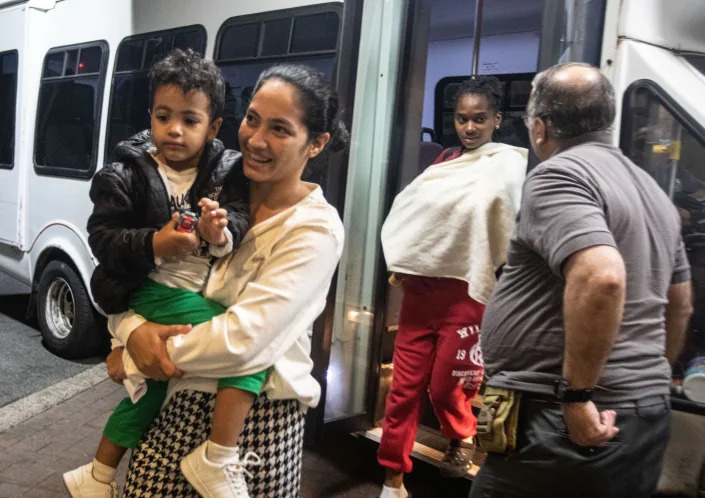Tim Adams
Sun, 18 June 2023
A colleague of Minette Batters used to offer her a favourite piece of grandmother’s wisdom: “Things will never be as good as you hope they are going to be and will never be as bad as you fear they are going to be.” In the five years since Batters became the first female president of the National Farmers’ Union, the latter part of that saying has, she says, not been much use at all. “Things have been much worse in the sector than any of us could have imagined,” she says. “We had hard Brexit, the pandemic, and then Russia invaded Ukraine.” Among the most visible results of that tragic trio have been soaring food prices and sometimes empty supermarket shelves, failing farms and labour shortages. Faced with the madness of government ministers suggesting “let them eat turnips” and desperate face-saving “global” trade deals that threaten the livelihoods of her 47,000 members, Batters has been a voice of admirable sanity and composure.
The week in which we meet for lunch is not atypical for her, she says. She’s been up early morning and late at night helping with the lambing at her farm in Wiltshire, as well as keeping on top of her day job at the NFU in London. After a round of media on the latest eye-watering inflation figures that morning, she is due to appear before the environmental audit committee of MPs that afternoon – so, tempting though it is, she won’t have a glass of wine. She is in training for a marathon at the weekend, however, so carbs are welcome.
We are at a restaurant called Rabbit just off the King’s Road in west London, run by the Gladwin brothers, one a farmer, one a chef and one a restaurateur. Batters has chosen it for its commitment to fresh, seasonal British produce, much of which comes from the Gladwin family farm in Sussex (some of the wine list, in which British wines feature heavily, is also a family concern). Batters brought a group of regional farmers here for an awards ceremony last year, in part to model what was possible. The food – halibut and artichoke, tender beef sirloin with foraged mushrooms, fabulous spring greens and “salt baked” spuds – more than lives up to its “local and wild” billing.
As we eat, Batters talks me through some of her more surreal and dramatic moments in office. Calling Jamie Oliver on his birthday at the beginning of lockdown to enlist his urgent support to save the UK’s speciality cheese industry; listening to environment minister Thérèse Coffey telling poultry farmers that the fact they now produced a billion fewer eggs than two years ago didn’t represent any kind of crisis. The short Liz Truss debacle was probably her lowest point. “The government had just agreed the disastrous deals [on importing sheepmeat] with Australia and New Zealand and they announced they were opening discussions with Canada based on [importing] 100,000 tonnes of beef.” She shakes her head in remembered disbelief. “I was also in the middle of trying to sell my house, and interest rates rocketed so that obviously fell through …”
Farming is also about community, the pub, the vet, the post office and the school
That she had an idea of what was coming didn’t make it any easier to handle. “I remember asking Kwasi Kwarteng when he was business minister if he was going to look into the sale of Morrisons supermarkets to American private equity,” she says. Kwarteng told her that “he couldn’t be a free marketeer one day of the week and not the next”. She replied: “What if they wanted to buy Stonehenge?”
“What I find bizarre,” she says, “in that approach is that in ‘free market’ America, say, the government intervenes on behalf of the food sector everywhere, all the time. We just seem to think, well, if you leave it alone, it’ll be fine. But that often just means we are open to abuse from everyone.”
Batters has grown up with some of these issues. Her father took on a farm business in partnership with a landowner in south Wiltshire. He always told her and her brother that it would never be something they were guaranteed to inherit, and they should get other skills. Her first ambition was to be a showjumper or a jockey (she was considered for the British junior eventing team and rode racehorses at trainer David Elsworth’s stable). When that didn’t work out she went to catering college in London, before returning home. She eventually persuaded the landowner to let her take on her parents’ farm in 1998, when she was 32, sealing the deal with a promise that she would also renovate a pair of derelict 17th-century cottages. Batters is divorced and has 19-year-old twin children. To provide an additional income she started a wedding venue business at the farm, but that became a nightmare during Covid. “We obviously have honoured all the cancellations,” she says, “although one or two couples had split up and a few now had babies.”
Working the farm has kept her close to the challenges that her members face. That means steering between business survival and shifting environmental policy. Despite anxieties around food security, “net zero means the government is currently focused on actually producing less food”, she says. She argues that “it actually has to be more about sustainable intensification”, referencing Gabe Brown’s book From Dirt to Soil, about how with proper support, regenerative methods can revolutionise yields, restore ecology and save farms. “We have to deliver a success story for all our land. That is about wild spaces, but it is also about farmers and about food. What we shouldn’t be saying is we will just do the food bit in Norfolk and give up on the rest.”
The real challenge, she suggests, is around something on which the government has nothing much to say: the joined-up commitment to a food culture more like that of France or Italy, that puts ordinary people in close touch with the story behind what they eat. “The question still really is how do we cut out highly processed food and learn to cook again from scratch,” she says. “That connection has to be where it starts.”
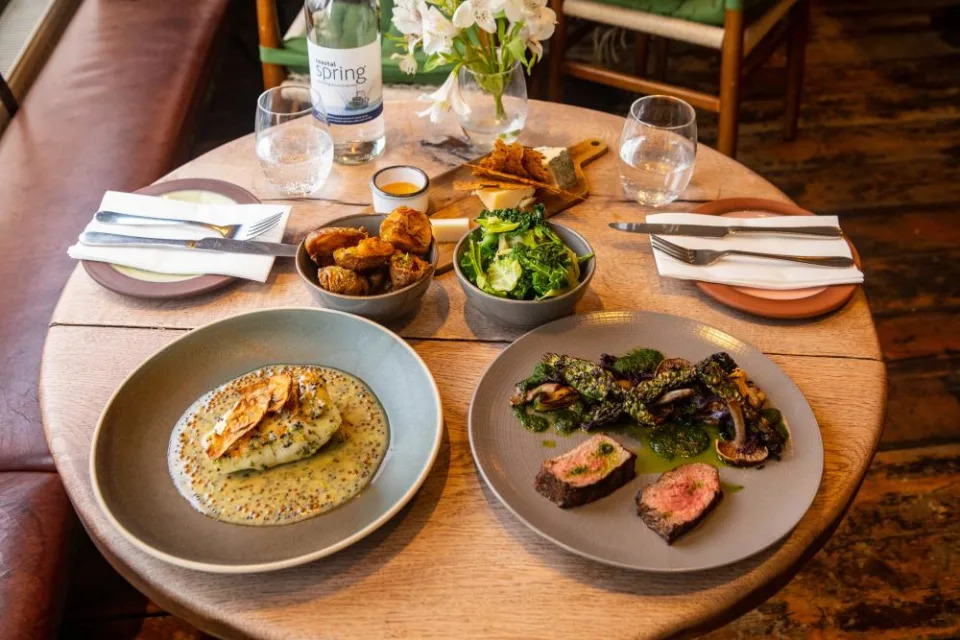
Minette ate Line-caught halibut £33 Tim ate Beef sirloin £34 They shared Salt-baked potatoes £6.50; spring greens £6; cheeseboard £15 They drank Sparkling water £3.40. Photograph: Antonio Olmos/The Observer
The follow-on becomes, of course, how do you make that healthy and local principle affordable for everyone – even those whose first priority is to put any food on the table?
That, Batters suggests, is the thing nobody wants to talk about. Everyone wants higher standards, but who will pay for them? There is profit in the system – why else would private equity be so keen to buy in? – but that is too often supported by the squeeze on those at either end of it, particularly those farmers forced to absorb rising costs to protect cut-throat supermarket profit margins. “There’s only so long that is sustainable,” Batters says. “And that’s where we are at the moment.”
That thought returns us to the food in front of us, a shared plate of British cheeses, Wookey Hole cheddar, Bath soft, rosary goat’s cheese from Salisbury. Each one, unquestionably, worth preserving.
How much of what she says about this crisis, I wonder, ever lands with ministers keener to talk about small boats than smallholdings?
Her meetings with ministers have often proved frustrating, she says. She recalls how Jeremy Hunt once prefaced a conversation by saying: “You’ll have to excuse me, I don’t know much about the agriculture sector.” Well, she said: “You eat food? That’s what we provide.” She looks for allies wherever she can find them: Jeremy Clarkson, the sheep farmer James Rebanks, the new king. “They all realise that farming is also about community,” she says. “It’s not the diddly squat percentage of GDP, it’s also the pub and the vet and the post office and the school … I get officials and ministers saying: ‘We need to take X amount of land out of production’ and I say: ‘What about the people?’ And they just look at the floor.”
Batters is, it seems to me, full of clear ideas about how to protect that way of life and sustain the land on which it depends. It comes as a bit of a shock then, when she mentions in passing that from next year she will no longer be part of that debate as head of the Farmers’ Union. She hasn’t made a formal announcement, but after 10 years as deputy and then leader, she says she won’t stand again for reelection and will let someone else take up the battles she has joined.
“It’s become an exhausting job,” she says. “A decade seems about the right time to end.” She would make a natural politician, but she has no plans in that direction. There’s the farm, of course, but the only other thing she has signed up for is to chair her local agricultural show. I imagine, in some ways, she can’t wait.
